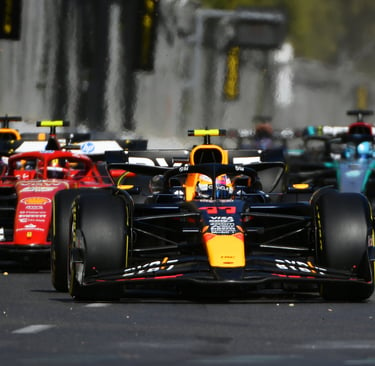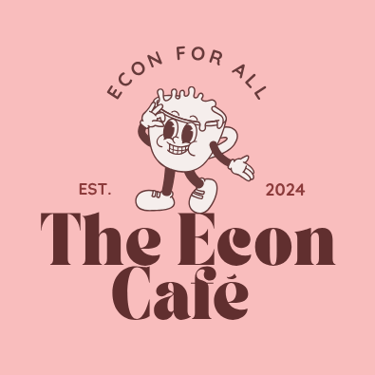Money on the Grid: The Economics Behind F1
FRESH BREWSFEATURED
From the pit lane to the boardroom, Formula 1 is more than just fast cars — it’s a masterclass in economics. From $15 million race cars to billion-dollar tourism boosts, F1 thrives on scarcity, sponsorships, and supply-and-demand. Whether it’s budget caps, brand deals, or why Monaco tickets cost more than a vacation, this article explores how economic forces fuel the world's fastest sport.


Budgets & Costs — the arms race of speed.
As an F1 team strategises its race in Abu Dhabi or around the world, it also has to strategise its millions – how to spend it, where to spend it and who to spend it on. Moreover, the Fédération Internationale de l'Automobile (FIA), the governing body for world motor sport, has introduced rules and regulations like the budget cap, aiming "to promote financial sustainability and competitive parity among teams". This allows teams which have more funding not to overspend and overshadow lower-funded teams.
Reportedly, between 2023 to 2025, the budget was set to $135 million, but it is expected to rise to $215 million in 2026. These budget caps are instituted for all car components, from the steering wheel to the wheel nuts (excluding engine), most team personnel salaries, garage equipment, spare parts, and transportation costs. Driver salaries, marketing expenditures, etc, are where excess funds can be used.
Not conforming to these rules leads to severe penalties, which can become very expensive. For example, in 2021, the FIA found Red Bull guilty of a "minor" overspend. Leading to a $7 million fine and a 10% reduction in aero testing for 2023 as punishment.
Now, you may ask why it is so expensive. One of the first economic ideas that shows up in F1 is scarcity. There are only 20 driver seats in the world’s most elite motorsport, and a limited pool of world-class engineers. This scarcity drives up salaries: top drivers can earn millions per year, and the elite engineers are paid like the top of the tech industry.
Moreover, this scarcity follows into the car itself through the exotic materials and mechanisms. Red Bull estimates the current cost of a race car to be between $12-$15 million, not to mention the chassis, engine and transmission, the most expensive components are allowed to be priced per season at around $10.6 million. This does not include any research and testing costs, so over time, as a team prepares, they must manage how they spend their money and where they should upgrade the car.
However, this is where opportunity cost comes in. Teams have limited budgets, so every dollar spent on one part of the car means less for another. Spending millions on aerodynamics could mean fewer resources are required for engine upgrades, and vice versa.
Sponsorship — why brands love F1.
Why are there so many stickers? As much as teams race it out with each other on the track, they also face each other in finding their ideal sponsor to make deals that cost millions. This is where incentives drive the sport’s financial engine. Brands pay huge amounts to have their logo on a car, driver’s suit, or trackside banner because Formula 1 has accumulated a fan base of 826.5 million as of 2024, and it is just rising. Moreover, ESPN reports that the 2025 F1 season has had record-breaking TV rating performances in the US, with viewership peaking at 1.8 million people at the British Grand Prix. For a sponsor, that kind of exposure can lead to huge increases in sales and brand recognition.
In economics, we measure this through return on investment (ROI). For example, a brand might spend $20 million sponsoring a team, but if that exposure helps them earn $50 million in sales and marketing value, making this expenditure is very valuable and worth it.
This battle for sponsorship is also a form of competition — not on the track, but in the boardroom. Teams compete to sign the biggest deals, offering sponsors better visibility, access to VIP events, or association with winning drivers. This competition pushes teams to be more creative and strive for glory, to be attractive to brands.
Host Cities — How F1 brings in the money.
So why would a city want to host? Hosting a Grand Prix also involves opportunity cost. A city must spend millions on race fees, track preparation, and security. That money could have gone into other public projects or events, hoping that the returns from hosting will be worth it.
However, these incentives are huge for cities: a single Grand Prix weekend can bring in hundreds of millions of dollars in tourism revenue. Hotels are filled, restaurants are packed, and thousands of temporary jobs are created. This is called the multiplier effect — money spent by visitors circulates through the entire local economy, benefiting businesses outside the racetrack. A big example being Singapore, as of 2008, reports have indicated that the Singapore Grand Prix alone has generated more than $1.5 billion in incremental tourism receipts, indicating the return on investment.
For Monaco, Austin and Singapore GPs, this is more than the fastest race on the planet; it's an opportunity to boost their economy, attain global reach and be classed as a renowned place to visit.
Let's go to Monaco. Wait, why does it cost about $2200 for the cheapest grandstand ticket? And for the Qatar GP, it's about $650 for the main grandstand for three days. Voilà, the cause of this is supply and demand. Take Monaco, there are only 37000 seats for spectators, while in Qatar, there are 52000 seats, and fans from around the world want to be there. That high demand and low supply in Monaco push ticket prices through the roof, but since Qatar has more seats and can meet the demand better, the cost is much lower.
Just as F1 drivers make decisive turns and moves, so do the teams, sponsors and cities in their financial ventures, showcasing economic principles in action. Scarcity drives up the value of top talent, supply and demand influence ticket prices, opportunity cost forms team and city decisions, incentives push everyone to invest, and competition keeps creativity and innovation alive, further advancing this excellent motorsport. As the chequered flag is waved, economics stands at the podium as a factor which significantly shapes the growth of this sport and will evolve like every new race tactic.
